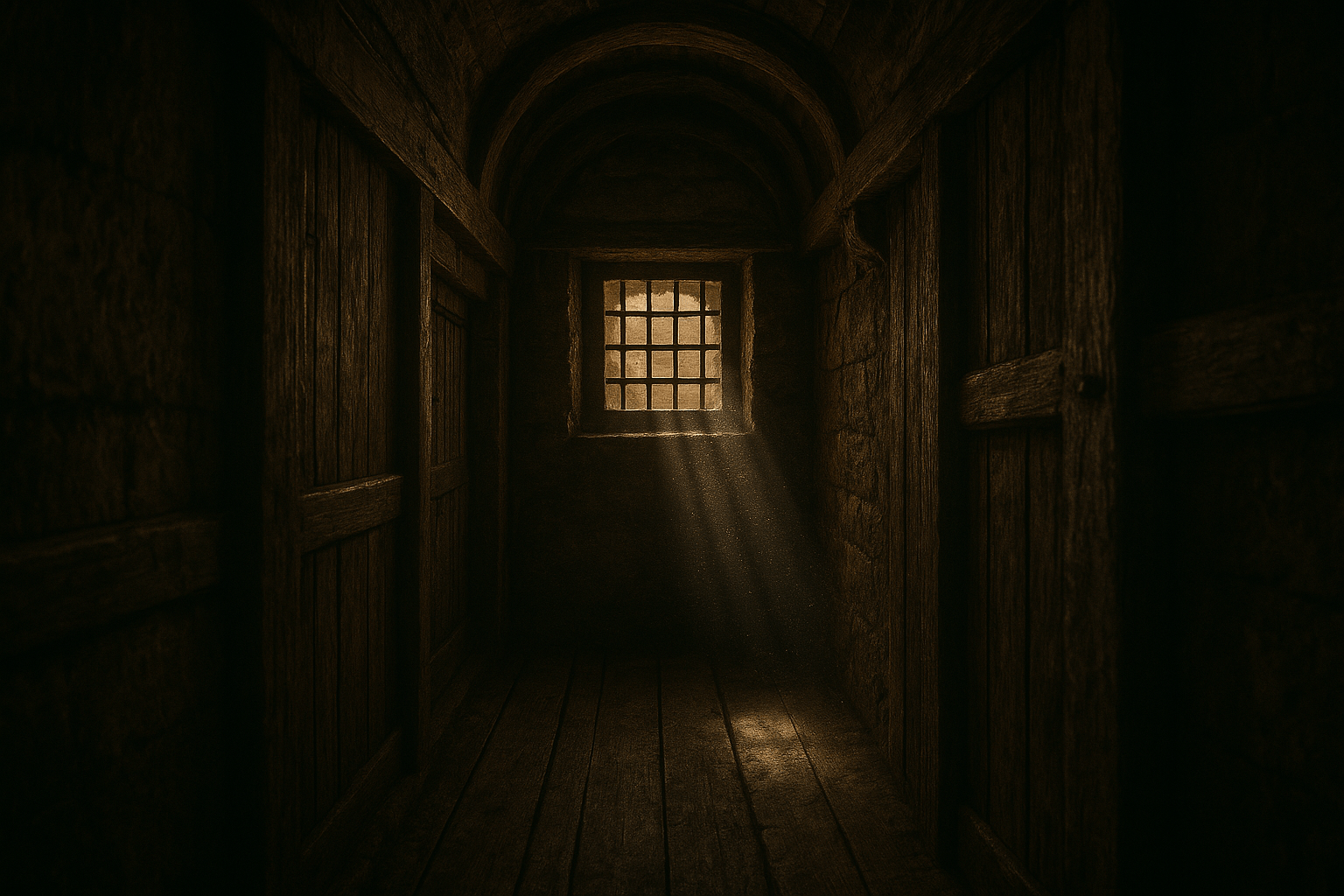While the standard tour of the palace guides you through the Doge’s lavish apartments and vast, art-filled council chambers, the Secret Itineraries tour pulls back the curtain. It reveals the administrative and judicial nerve center that allowed the “Most Serene Republic” to maintain its iron grip on power for centuries. The experience is an immediate and dramatic shift in atmosphere, from gilded ceilings and priceless Tintorettos to narrow, low-beamed corridors where the business of espionage, justice, and punishment was carried out with chilling efficiency.
The Bureaucratic Heart of the Republic
The tour begins by ascending a narrow staircase, leaving the public spaces behind and entering the world of the Venetian bureaucracy. You are immediately led into a series of small, interlocking offices and chambers that once housed the Republic’s most vital administrative bodies. The contrast is stark; ornate marble is replaced by dark wood and functional furniture.
One of the first key areas is the Secret Chancellery (Cancelleria Segreta). This was the state’s classified archive, a room lined with formidable wooden cabinets where all of the Republic’s most sensitive documents were stored. Imagine locked compartments holding secret treaties, intelligence reports from a vast network of spies, and confidential records of state trials. Access was strictly limited to the Grand Chancellor and his most trusted scribes. Standing in this room, you can almost feel the weight of the secrets that determined the fate of nations, all filed away with meticulous precision.
Nearby, you’ll find the office of the Great Chancellor, the highest-ranking civil servant in the Republic and the head of the bureaucracy. His position was for life, ensuring continuity and an unparalleled institutional memory. These rooms weren’t built for comfort; they were designed for work, secrecy, and the seamless operation of the state.
The Machinery of Justice: The Torture Chamber
The tour takes a progressively darker turn as it moves from administration to justice. The next stop is one of its most unsettling: the Chamber of Torment (Sala della Tortura). This room is chilling not just for its function but for its strategic location. It is situated directly connected to the judicial chambers and, in some historical layouts, was just above the Doge’s own apartments. This was no accident. It served as a stark, audible reminder to all—including the head of state—of the justice system’s ultimate power.
Inside, the guide explains the pragmatic and legally regulated nature of torture in Venetian law. It was not used for sadistic punishment but as a tool to extract a confession, often from those already considered guilty. The most common method was the strappado, where a prisoner’s hands were tied behind their back and they were hoisted into the air by a rope, often dislocating their shoulders. The guide will point out the pulley systems and hardware still present in the room. Often, the mere sight of the instruments and the presence of the executioner were enough to compel a confession, which was the primary goal. It’s a sobering look at how justice was dispensed before the modern concept of “innocent until proven guilty.”
The Infamous Prisons: From the Leads to the Bridge of Sighs
From the depths of the justice system, the tour ascends to the very top of the palace, to the infamous attic prisons known as the Piombi. Their name comes from the Italian word for “leads”, as they were located directly under the palace’s lead-plated roof. This location made the cells torturous; they were freezing cold in the winter and unbearably hot and suffocating in the summer.
The Piombi were reserved for prisoners of a certain status—political dissidents, intellectuals, and minor plotters, rather than common criminals. Its most famous inmate was none other than the legendary adventurer and seducer, Giacomo Casanova. In 1755, he was imprisoned here for “public outrages against the holy religion.” The tour brings his story to life. You are shown the type of cell he was kept in while your guide recounts his audacious and brilliant escape. Casanova, with the help of a fellow inmate, managed to dig a hole through the ceiling, climb out onto the roof, break back into the palace through a window, and then nonchalantly walk out the main entrance past guards who assumed he was just a visitor finishing his business. His detailed memoir makes this part of the tour a thrilling tale of ingenuity and daring against the oppressive backdrop of the prison.
The final stage of the journey takes you across one of the most famous and misunderstood bridges in the world: the Bridge of Sighs (Ponte dei Sospiri). Today a romantic photo-op for gondola riders, its original purpose was far more grim. The enclosed bridge was built in 1600 to connect the interrogation rooms and courts in the main palace with the New Prisons (Prigioni Nuove) across the canal. The “sighs” were not those of lovers, but of condemned prisoners who, as they were led to their cells, would catch their final, fleeting glimpse of beautiful Venice through the bridge’s stone-barred windows. Walking through it yourself, you feel the profound finality of that journey from judgment to incarceration.
The tour concludes in the courtyard of the New Prisons, leaving you to re-enter the main palace. The experience provides a profound and more complete understanding of the Venetian Republic. It was not merely a city of carnival, art, and commerce. It was a highly sophisticated, pragmatic, and often ruthless state that survived for a millennium through a complex system of laws, bureaucracy, and unwavering control. The Secret Itineraries tour masterfully exposes this hidden, structural foundation, transforming the Doge’s Palace from a beautiful museum into a living lesson in the exercise of power.
